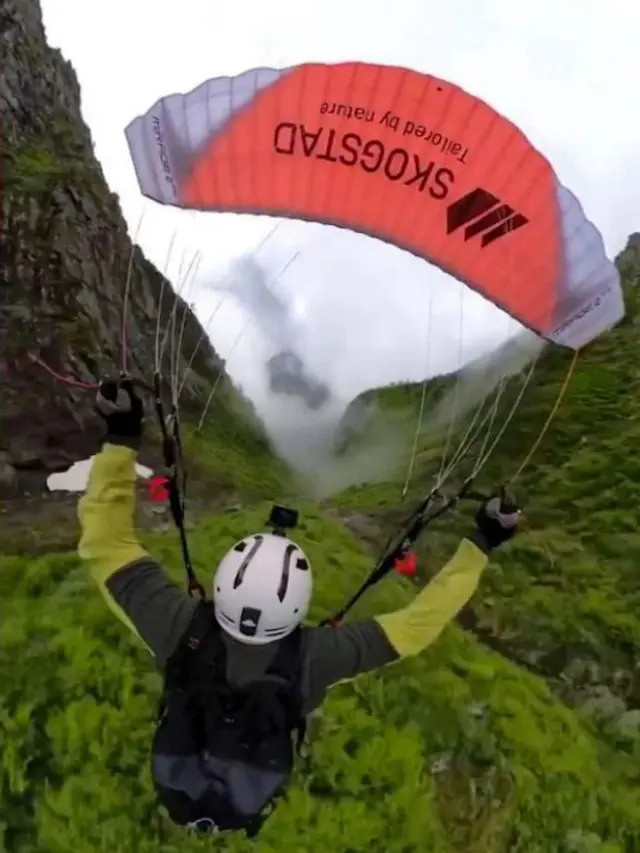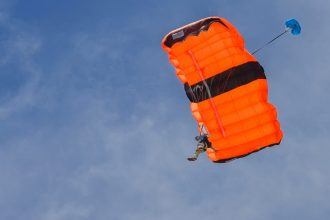A speed-flying pilot’s mind-blowing journey across a luscious ravine in Norway was captured on video.
Lehart Eriksen was traveling at around 68 miles per hour 2,772 feet above sea level in the awe-inspiring video shot in Lysebotn, a village that lies at the end of an isolated valley that is usually only accessible by boat or by a single road.
The 25-year-old from Mosjoen, Norway, began his speed-flying studies in 2016 at Voss Folk High School, an informal college giving air sports lessons.

Eriksen has made more than 1,200 flights so far and now works as an instructor.
Speed-flying is a faster form of paragliding that allows for swift height descents and breathtaking views of mountain ranges that gliders can almost reach out and touch.
Videos of Eriksen’s white-knuckle rides show how close he gets to the sides of the ravines, steering nimbly around rocks that would kill him if he hit them.
Fans of the extreme sport fly at speeds ranging from 30 to 153 kilometers per hour (19 to 95 miles per hour).

Despite the fact that speed-flying is associated with a high mortality rate, Eriksen told Zenger News in an interview that the worst injury he had ever sustained was a sprained ankle.
“To be honest I haven’t really been in a life-threatening situation, I have always done my best to do this as safely as possible,” he said.
“I had already twisted my ankle twice that year so I wouldn’t really call it a dangerous accident, I just brain-farted while braking off speed in for a landing.”
Despite this, the young man admits to the dangers associated with the sport.
He revealed: “I have lost a few friends to this sport, and I have seen how brutal this sport can be.
“However, it had always been important to me to keep flying and to keep evolving my skills, knowledge and safety approach to whatever I do.
“I always bring friends along, this way it’s safer, because we can look out for each other.
“Five percent of speed-flying is about flying itself, 95 percent of it is hiking, socializing and happy memories with friends.”
The speed-flying instructor, who also gives indoor skydiving or “wind tunnel” classes, explained that adrenaline-inducing sports help him to relax.
“This is the only place on earth where I can be 100 percent focused on what I do and where I can let everything else go for a couple of minutes.
“I think you should pursue whatever makes you happy, and this makes me happy.”
This story was provided to Newsweek by Zenger News.








